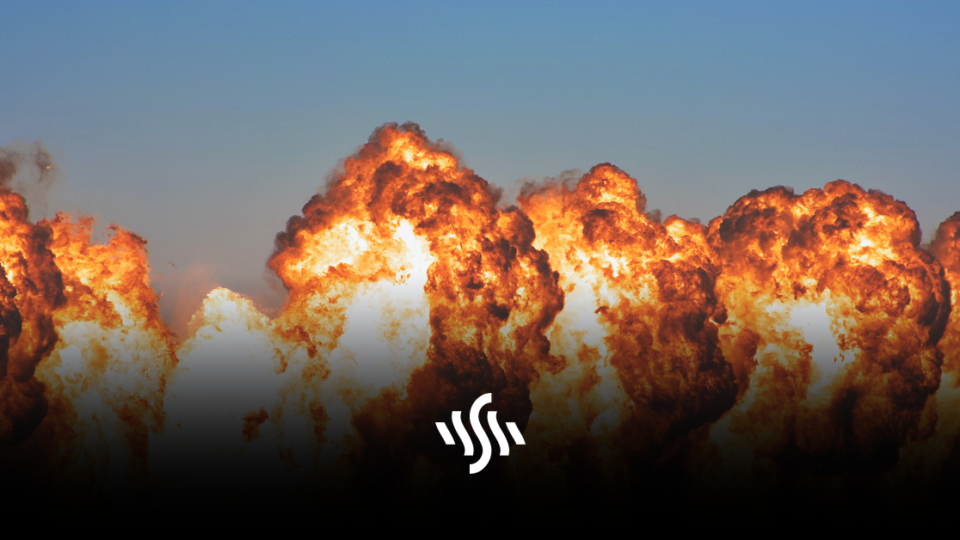Easy Way to Create Explosion Sound Effects
Creating explosion sound effects might seem tricky when causing actual explosions is frowned upon. That doesn’t have to be the case – check out this cool way you can manage it!
The art of Foley and sound design involves a lot of experimentation and play. More often than not, the sound you’re hearing in films and TV isn’t what you think it is. Lots of gory SFX are made with fruit and vegetables, whilst weather sounds come from intriguing instruments.
This sort of thinking outside the box when creating your own sound effects is particularly handy when it comes to noises linked to dangerous events. For instance, fire. Not the wisest move striking up a blaze in your recording studio, opting for snapping twigs or messing with balloons is a safe and effective alternative.
What about explosions, then? If you’re making an action packed film, or simply want original sound effects to layer over your YouTube intro, knowing how to create explosion sound effects comes in real handy. You may even just be looking to expand your sound effects catalogue, in order to share them with the creative world.
Feast your eyes upon this simple yet clever way you can create explosion SFX. We promise no mammoth clean up or damage control afterwards!
What You’ll Need
The beauty of this method is that there is next to no equipment required. You simply need your voice, a computer, and a DAW of your choosing.
A microphone will also help, but this can be got around if you don’t have one. There are plenty of awesome microphones for recording your voice out there, so getting hold of one doesn’t have to be a challenge either.
Step 1 – Record Your Voice
You need to create the foundation for your explosion sound effects, and this is done by recording your voice. Grab a microphone and hold it fairly close to your mouth. You can mimic the sound of explosions with your mouth, or experiment with other sounds – don’t be afraid to get silly with it.
These will then form the base layer for the sounds, which you can layer up to alter the final result if you wish.
Step 2 – Time Stretching
In your DAW, begin time stretching your voice recordings. This is where the audio will start to change and take on new qualities. They’ll sound less like standard vocal recordings, and move into the real of sound effects.
Panning tracks will also give a more stereo, surround sound effect. This will help fatten up the effect.
Step 3 – Adding Effects
In order to take your time stretched voice recordings to an explosive level, you’ll need to add some audio effects. Adding things like reverb and chorus to the tracks will give the effect of broadening the magnitude of the sound. An all important step, especially, for creating massive explosion sound effects.
Step 4 – EQ
By playing with the EQ of the tracks, you can really transform the overall sound. By adding plenty of bass and boosting the high-end frequencies, this will give your recordings more heft and weight.
Cutting out some of the treble and high-end frequencies will reinforce this.
Finishing Up
So much of Foley and sound design, as mentioned previously, comes from experimentation. Trying out different surfaces, textures, and recording techniques. This also goes for audio production, and the creation of SFX via digital means, like DAWs.
There’s no right or wrong way to create explosion sound effects, so have a play with different vocal sounds, audio effects, and EQ. You’ll find you have an extensive library of awesome explosion SFX in no time at all.
If you’re sitting on a library of sound effects that you’ve recorded, why not become a Synchedin contributor?
Applying to become a contributor is a breeze, and you could earn passive income for your sounds, all whilst helping out creators all over the world.
